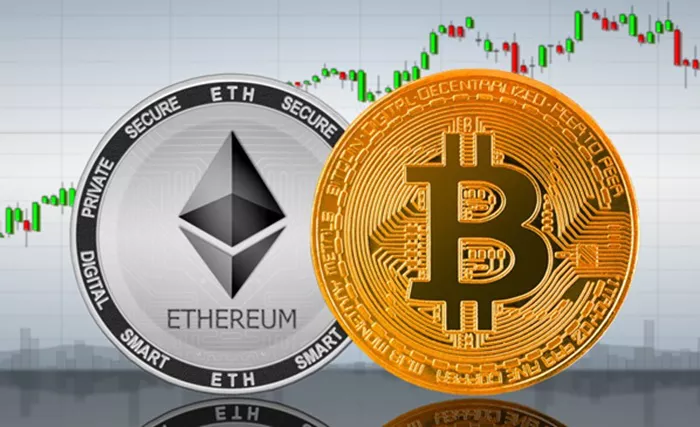In the rapidly evolving world of cryptocurrency, understanding the key terms and concepts is crucial for both new and experienced investors. One such term that frequently comes up is “ETH.” This abbreviation is central to discussions about one of the most influential and versatile blockchain platforms in the cryptocurrency space. This article will delve into what ETH stands for in cryptocurrency, exploring its significance within the Ethereum ecosystem and its broader implications for the digital economy.
What is Ethereum
ETH stands for Ether, which is the native cryptocurrency of the Ethereum platform. Ethereum, launched in July 2015 by Vitalik Buterin and his team, is a decentralized, open-source blockchain platform that supports the development and execution of smart contracts and decentralized applications (dApps). Unlike Bitcoin, which primarily functions as a digital currency, Ethereum’s capabilities extend far beyond that, offering a platform for a wide range of applications.
Key Features of Ethereum
Smart Contracts: Ethereum introduced smart contracts, which are self-executing contracts where the terms are directly written into code. These contracts automatically enforce and execute the terms of an agreement without needing intermediaries.
Decentralized Applications (dApps): Ethereum enables developers to build and deploy dApps, which operate on its blockchain. These applications run on a decentralized network, reducing reliance on single entities and enhancing security.
Ether (ETH): Ether is the cryptocurrency used to power transactions and applications on the Ethereum network. It is required for paying transaction fees (known as “gas”) and is used as a medium of exchange within the Ethereum ecosystem.
Ethereum Virtual Machine (EVM): The EVM is the runtime environment for executing smart contracts on Ethereum. It allows developers to deploy and run code in a decentralized manner, providing a secure and reliable platform for applications.
See also: Litecoin Vs Bitcoin Vs Ethereum: What’s the Difference?
Significance of ETH
ETH plays several critical roles within the Ethereum ecosystem:
1. Transaction Fees
Ether is used to pay for transaction fees and computational services on the Ethereum network. These fees, called “gas,” compensate miners or validators for processing and validating transactions and smart contracts.
2. Value Transfer
ETH serves as a medium of exchange and store of value within the Ethereum network. Users can transfer ETH to one another, invest in various projects, or use it within dApps.
3. Incentive Mechanism
ETH incentivizes network participants who contribute to maintaining the security and operation of the Ethereum blockchain. Miners or validators receive ETH as a reward for validating transactions and securing the network.
4. Collateral and Governance
In addition to its primary functions, ETH is also used as collateral in decentralized finance (DeFi) protocols and for governance in various Ethereum-based projects. It plays a role in voting on protocol upgrades and network changes.
ETH vs. Bitcoin (BTC)
ETH and Bitcoin (BTC) are both prominent cryptocurrencies, but they serve different purposes:
Bitcoin: Launched in 2009, Bitcoin is primarily a digital currency intended as a store of value and medium of exchange. Its blockchain focuses on peer-to-peer transactions.
Ethereum: Launched in 2015, Ethereum is a versatile blockchain platform supporting smart contracts and dApps. ETH is used both as a cryptocurrency and a utility token to facilitate various operations on the network.
See also: How Much USD Is 0.05 ETH?
Ethereum’s Evolution and Upgrades
Ethereum has undergone significant upgrades to enhance its functionality and performance:
1. Ethereum 1.0
The original version of Ethereum, known as Ethereum 1.0, laid the foundation for smart contracts and dApps.
2. Ethereum 2.0
Ethereum 2.0, or Eth2, is a major upgrade focused on improving scalability and security. It involves transitioning from a proof-of-work (PoW) to a proof-of-stake (PoS) consensus mechanism to increase transaction throughput and reduce energy consumption.
3. EIP-1559
Implemented in August 2021, EIP-1559 introduced a new fee structure to improve fee predictability and reduce volatility. It features a base fee that is burned, which decreases the total supply of ETH.
Conclusion
ETH, or Ether, represents more than just a cryptocurrency; it is the lifeblood of the Ethereum blockchain. As the native token of Ethereum, ETH facilitates transactions, powers decentralized applications, and supports the execution of smart contracts. Its roles as a medium of exchange, incentive mechanism, and governance tool underscore its importance within the Ethereum ecosystem. Understanding ETH and its functions provides valuable insights into the broader Ethereum network and its impact on the cryptocurrency space. Whether you’re an investor, developer, or enthusiast, recognizing the significance of ETH helps in appreciating the innovations and potential of Ethereum’s decentralized platform. As Ethereum continues to evolve, ETH remains central to its ongoing development and the future of blockchain technology.
Related Topics:

